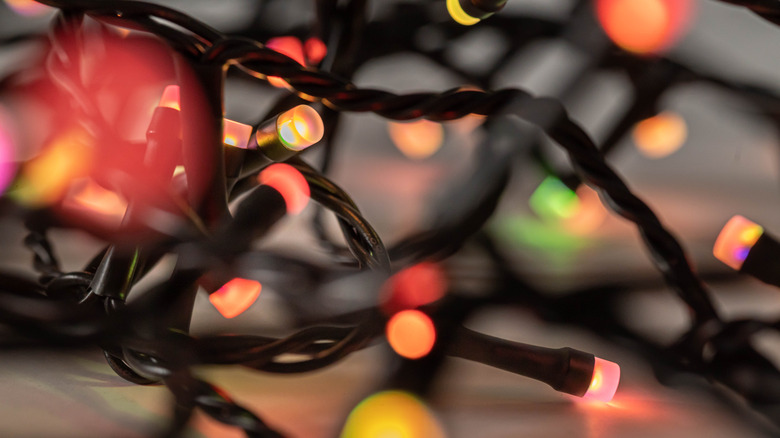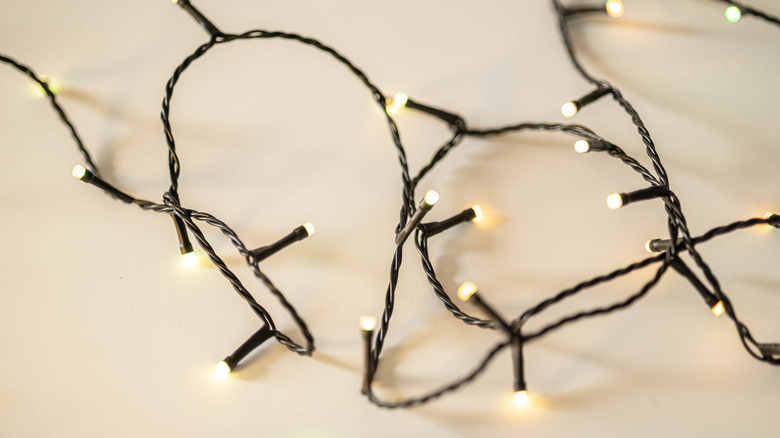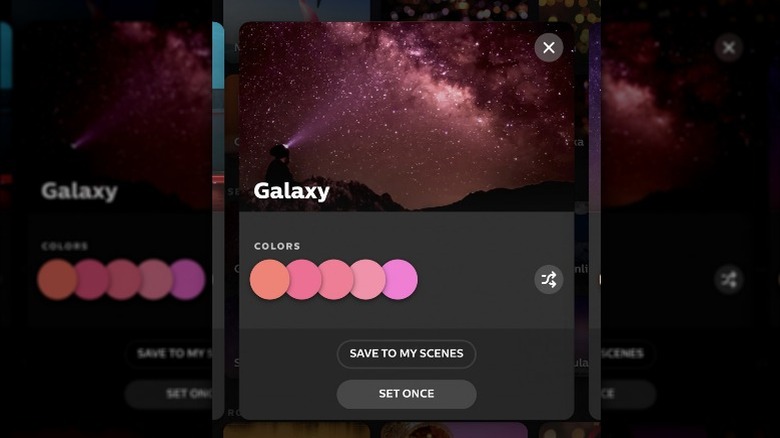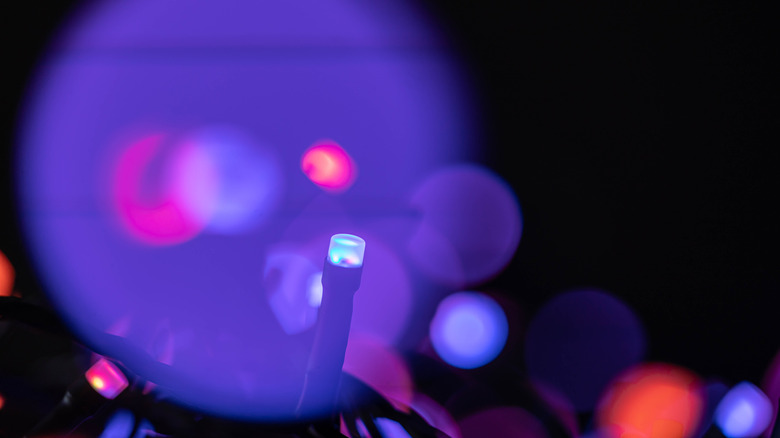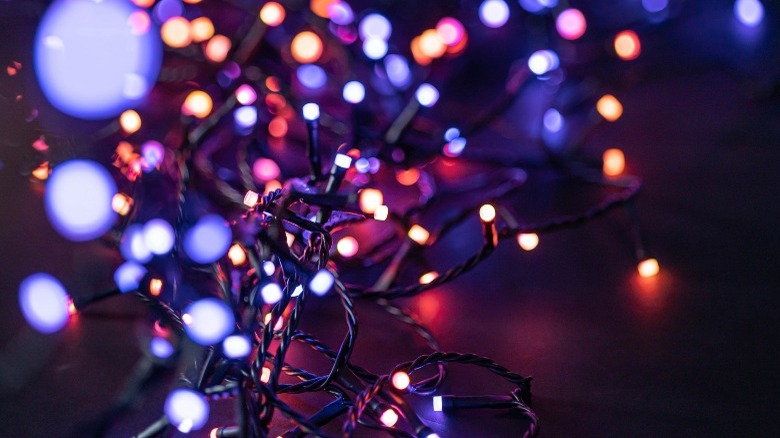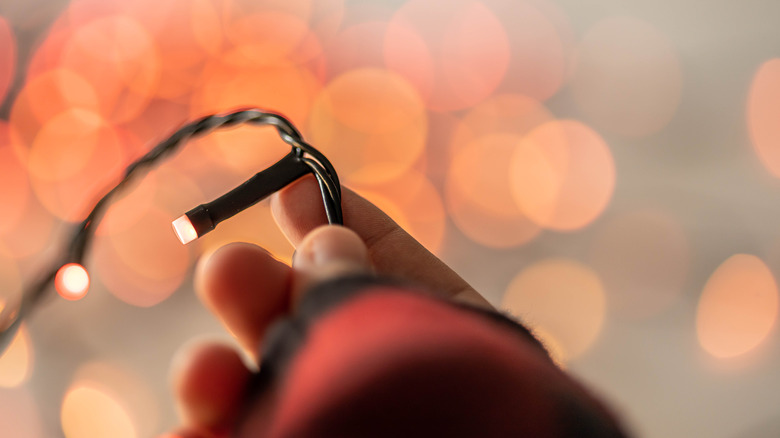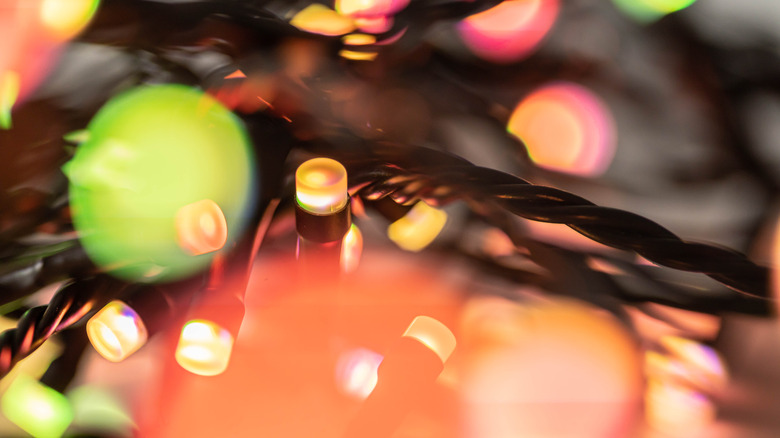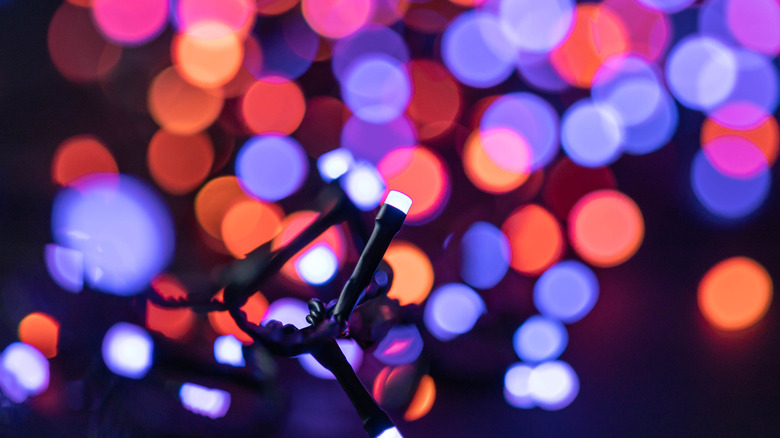Philips Hue Festavia String Lights Review: A Lively Addition To Your Smart Home
- Seamless integration with Hue system
- Beautiful, vibrant colors
- Great dimness-brightness range
- Tons of light customization options
- Can pair with multiple phones
- Lights very prone to kinks
- Ironically less versatile than Christmas tree lights
We may receive a commission on purchases made from links.
If you haven't decked the halls yet, it's about time someone lit a fire under your chimney. Dust off the ornament boxes and shake the cobwebs off the creepy plastic Santa Claus — yes, the one whose eyes seem to follow you from his vantage point on the shelf — and get a Christmas tree before the pickings are twigs. You're probably familiar with the most time-consuming holiday chore of all: Untangling 200+ feet of snarled string lights. There are few greater offenses to the human spirit than sitting on the floor for two hours to smooth out the strands foot by foot, only to plug those suckers in and find they've gone kaput. Or, more accurately, that one out of hundreds of tiny bulbs has gone kaput, ruining the party for everybody.
Before you have a Christmas meltdown à la Clark Griswold over the mess, consider this festive idea: You banish those worn-out old things to the basement and bring in a sleek, new alternative. Trust me, one tiny burnt-out bulb is not worth the Christmas crazies. Holiday stress may have some people ready to kick a snowman's face in, but Hue — that's the smart light system by Philips and Signify — recently released their "smart" take on string lights, Festavia.
These indoor-only LED smart string lights aren't meant exclusively for decorating trees or even the holiday season, but they do come just in time to finally convert your Christmas tree lighting to your smart light ecosystem. As with any smart version of something, you can expect to pay many a penny more than the meager non-smart version. In most cases, the investment is worth it — can we say the same about the Festavia lights? Philips/Signify provided us with some Festavia lights to find out.
Unboxing and setup
The Philips Hue Festavia string lights come neatly packaged with a convenient reusable spool for storage. The entire strand spans 65.6 feet (20 meters), per Philips, and totals 250 mini LEDs. The power cable adds an additional 5.9 feet of length to the strand, connecting the lights to their 32W power adapter.
In terms of physical setup, all you need to do is attach the power cable to the light cable, and then connect the lights to your Hue app using the serial number provided on the box. You don't absolutely need the Hue app if you use a Google Home ecosystem, but you need some kind of smart home system, be it Hue, Google, or otherwise to make anything out of the lights. There are no physical controls on the product itself besides the power plug.
That generous power cable allowed us to try out the lights in a number of places — Christmas tree, banister, bed frame — without the hassle of extension cords. There is the matter of the big, bulky, and firmly not cute power/communication boxes on the power cable, so that will definitely eat into your hopes of discreetly disguising the cable. The glass LED bulbs seem pretty sturdy, enough to endure the standard crammed free-for-all that happens with Christmas decor storage, but I wouldn't push it, given that there's no replacement for the individual bulbs.
Making the most with the Hue app
The Hue app makes use of the lights effortless. Your capabilities are similar to that of just about any smart light — turning on and off, timer, brightness, and dimming — the works. If you don't already have the Hue Bridge — a hub that harnesses control of all the lights and allows for remote control when off your home Wi-Fi network — it would be handy, but not necessary. In my opinion, Hue puts in a great deal of effort to help its customers integrate smart lights into the home and make the most of them without any extras; the app characterizes each function and feature of their lights as contributing to your ambiance, entertainment, well-being, or security. The Festavia lights certainly fit into the first three labels; the color schemes are where the real fun is.
The schemes encompass different color palates and flickering/blinking/flashing patterns meant to emulate the themes of a tangible place — like Miami, Cancun, Chinatown, or Rio. Or mimic natural light spectrums, like galaxies, Northern lights, moonlight, and the first light of day. Or simulate a mood, like romance, peacefulness, or energy.
There are schemes for holidays, for activities like reading or relaxation, for different seasons or flowers. You can also set your own color schemes, create custom gradients, and set your lights to music.
A backdrop to any party, any time of year
All of these themes and schemes that the Festavia lights are capable of mean that you don't have to pack the lights up when the Christmas decor comes down if you don't want to. And truthfully, with how much the Festavia lights retail for, I would not aspire to only get two or three months of use out of them every year.
Even the bluer, cool-toned schemes are on the warmer side, and the brightest setting the lights can go to through the app aren't retina-burning by any means — I think at their brightest the Festavia lights could contribute to some lively birthday party decorations, and at their lower levels would add some wonderful cozy ambiance if strung up in a bedroom or lounge area. There's plenty of opportunity to get your money's worth out of the product if you're diligent about getting the lights out when you need them.
You should keep in mind, though, that Philips outlines a number of limitations for the lights. According to the user manual disclosure, Christmas tree ornaments shouldn't be hung from the lights, but (shrug) I did hang a few small-medium sized bulbs with no issue. The brand advises against stringing up the lights in a bathroom, sauna, pool house, balcony, or anywhere that sees a lot of moisture exposure.
However, I personally don't see any harm in using them outdoors on a dry, warm (no cooler than maybe 60 degrees F, maybe no hotter than the 80s) summer evening — perhaps for a patio party — as long as they're not plugged in anywhere near water or open flames/heaters, and brought indoors at the end of the night. These are just my thoughts, though — I'm not advocating for deviance from the manual.
The kink-prone wire was exhausting to get settled.
I cannot stress how much of a tangled mess these will become if they are fully unspooled and not wrapped around something. This picture of the string light havoc gave me wired earbud flashbacks. I think this happens with the majority of string lights, but I for some reason had hoped that a quality product such as Hue's had found a magical solution, but on the contrary, these seemed more coil-prone than others.
The long strand of woven wires did not lay smoothly at all, dashing my hopes of a delicate drapery of lights on my banister. The string, even after being unraveled for a full day, cinched up in twists, bends, and loops when let lax. It happened to an aggravatingly extreme degree with the Festavia lights, but at least they did come unknotted fairly easily.
Because I wanted to be as gentle as possible with the bulbs, there was no choice but to carefully unravel each tangle by hand (I just aggressively pull and shake my 10-year-old non-smart — dumb? — Christmas tree lights until the snarls fall out). But after I'd detangled three feet of the Festavia lights and turn my back to unroll some more from the spool, I'd turn back around to find the first strand all bunched up again.
I don't know how consistently I'd have the patience for that kind of ordeal, especially for short-term use of the lights. All you could hope for, I think, is that the wires will relax over time. Apparently, three weeks of being unraveled aren't enough time to satisfy.
Hue Festavia lights vs. other smart string lights
Smart lights, as a whole, are still a somewhat new industry, and string lights are even more niche that Hue doesn't have a whole bus of competitors to contend with. Among the others, there are the Feit Electric S14 LED string lights, listed for $99.99. These are quite different — they're large dangling bulbs and only 24 feet long, but for $60 less than the Hues with capabilities in the smartphone app, Alexa, and Google control. These are tailored for outdoor use, though, with the bigger bulbs spaced three feet apart.
On Amazon, the Twinkly Strings smart LED string lights retail for $119.99. These are the same length as the Festavias, have the same amount of lights, and create a similarly sized and shaped light bokeh — if the listing pictures don't fail us. In this brand, you could get 105 feet of wire with 400 LED lights for still less than the Hues.
These claim to be rated for both outdoor and indoor use and seem to be capable of all the same smart light things — dimming, timing, music synchronization, smartphone app control, pre-loaded and user-created color schemes, and Alexa/Google Home/Apple Homekit compatibility. And judging from the listing, it seems the Twinkly Strings have more creative freedom in the custom lighting; there's some sort of pixel color canvas where you can hand-draw the display you want the lights to portray.
On paper, the Twinkly Strings really do seem to give the Festavia a run for their money — but only, I think, if you don't already have a pre-installed set of smart lights you want to immerse the string lights into. When it comes down to technicalities and specs, I think it's arguable that the Festavia lights are a bit overpriced, but you have the integration to keep in mind.
The Christmas tree conundrum
I want to put aside all the potential uses of the smart lights and focus on decorating a Christmas tree — which, when we think of a use for string lights, is what the majority of us would recall. Plain Jane Christmas lights are available for as cheap as $5 per every 20 feet, but let's look at decent LED string lights. On Amazon, there are 131 feet of LED Christmas tree lights, with 400 lights on the strand. This brand — Ollny — can switch between warm white and multicolor, is indoor-outdoor capable, and has a 10-foot power cord, a remote, and a timer.
This amounts to about three lights per foot, while the Festavia lights average closer to four lights per foot, but all in all, that's way more light for a far lower price (around $40), at the cost of smartphone control and a bunch of color schemes.
But maybe we should stick to comparisons with 65 feet of lights, just like the Philips product. If we are sticking to the rule of thumb that every 1.5 feet of a Christmas tree will require 100 lights, that means the Festavia lights wouldn't even cover four feet of a tree — covering an eight-footer or more would sure cost you. The same length of LED string lights from the Twinkle Star brand on Amazon costs less than $25. It doesn't seem to have any remote controlling capabilities and has 50 fewer lights on its strand — but you can cycle through the lights' eight lighting modes if you can muster up the gusto to walk over to your Christmas tree.
There's also the main problem that regular Christmas tree lights have outlets on either end of the strand to string multiple strands together. The Festavias don't have this feature, so they're really not all that well suited for Christmas tree lights anyway — unless you have enough outlet space for multiple strands and can find a way to string them one after the other without the connecting outlets. I find all of these to be kind of problematic given that Christmas tree decoration is at the forefront of Philips' advertisement of the lights.
Are the Philips Hue Festavia string lights worth it?
I know what you're thinking. I've now effectively stated the obvious — smart versions of traditional devices are going to be more expensive, and you can get more for less when you manage to live without the bells and whistles. None of that is to say that I don't think the Philips Hue Festavia string lights are worth their price tag. The lights, even outside of your primary RGB colors, are deep and vibrant, easy to use, and the overall quality of the product seems fantastic.
But the Festavia lights' value is contingent on a few things. I think you need at least a handful of reasons to bust the lights out each year — or even better, find a permanent home for them among your decor. I also don't believe that Philips Hue provides a good entry-level smart light, meaning they make the most sense to purchase when you're already using a well-established Hue ecosystem. I absolutely would not be purchasing three or four sets of $159.99 smart lights just because I am in the market for new Christmas tree lights.
They're only worth it for Christmas tree decorations if you already have them on hand. When it comes to banisters, swag embellishments, or tabletop trees, they'd be perfect if you happen to have them laying around.
Philips Hue Festavia string lights would be great photography studio additions, too, if you do a lot of product photography. I used them for this too and found the app/Google Home control plus the color variety to be a huge advantage. Overall, in a number of specific scenarios, they'd be a fabulous investment both in and out of the holiday season.
